Black Lightning kicked off its final season yesterday and the Cress Williams-starring CW series remains one of the best superhero shows on the air right now. We don't know about you, but we missed Jefferson and his family of heroes and are excited to see them get back to the business of fighting for the people of Freeland. However, we want to clear up a common misconception about both Black Lightning and Black history in the DC Universe (it IS Black History Month, after all). It’s often said that Black Lightning was DC’s first Black superhero, but this, however, is only half-true. While Black Lightning was the first Black DC superhero to headline his own comic book title, quite a number of Black heroes have preceded him in DC history. To be fair, that number is not as many as it should be and often includes supporting roles to a white hero or majority white team. But these early positive examples of heroism still stand as DC’s first overtures towards a more diverse universe, one in which everyone can see themselves as a hero.
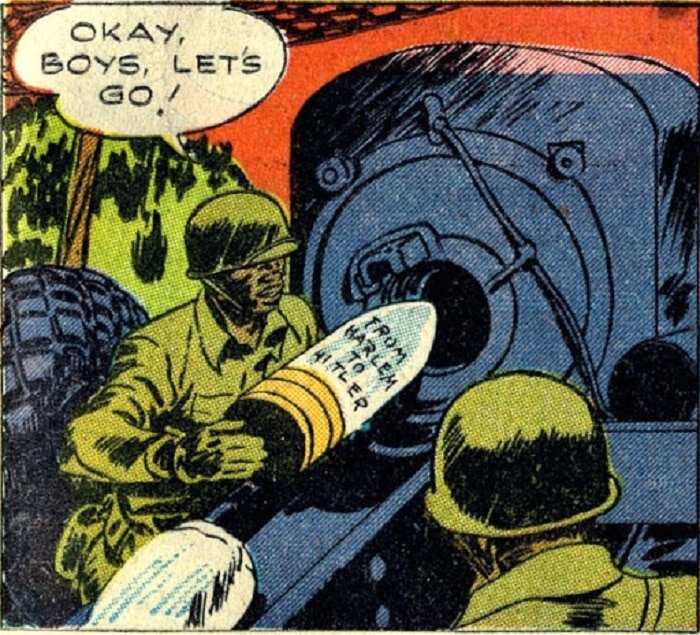
Ralph Jackson
First Appearance: World’s Finest Comics #17, 1945
Recommended Reading: JLA #61
The very first Black hero in DC comics history was a soldier by the name of Ralph Jackson. Written while America was still fighting with the Axis Powers, this true-to-life story of a battalion of African-American soldiers raiding a Nazi citadel was dedicated to the millions of Black men “doing their fair share in the armed forces, and on the home front, to win the war and usher in a new era of peace and understanding among men!” In the real world, Black men like Ralph Jackson enlisted to join the Allied Forces in droves in hopes of promoting a dream of a “double victory”: one which would defeat both the Nazi regime in Europe and win new rights for themselves in a divided America. Though Sergeant Jackson’s story only lasted for one issue, his legacy was preserved as the grandfather of Skyrocket, a high-flying member of the San Francisco-based super team the Power Company.
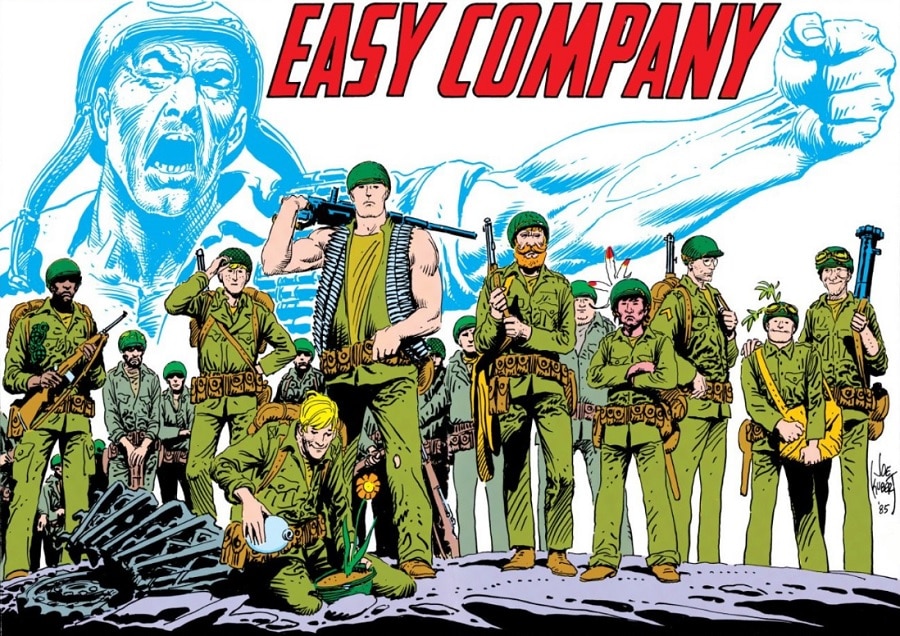
Jackie Johnson
First Appearance: Our Army at War #113, 1961
Recommended Reading: The Brave and the Bold #84
The most prestigious of DC’s wartime heroes, Sgt. Rock and his eclectic Easy Company represented the American values of freedom and diversity that the Allies were fighting for against the Nazi regime. One of Sgt. Rock’s most trusted soldiers was Jackie Johnson, Easy Company’s stand-in for those many Black men who enlisted in World War II. However, even as Americans fought to repel Nazi ideologies, racial segregation was still a powerful presence in the United States. Even in World War II, it was quite rare for African Americans to be integrated with their white brothers-in-arms. As a member of Easy Company, Jackie Johnson wasn’t just a champion for Black heroism, but for racial integration. An athlete himself, Jackie Johnson was based on the color barrier-shattering athletic stars at the time like Jackie Robinson and Joe Louis, literally fighting every inch they could for an equality denied to them by generations of bigotry. If Black and white men could fight together behind enemy lines, in the boxing ring, or on a baseball diamond, then it could be a first step to existing side-by-side off the field of battle.
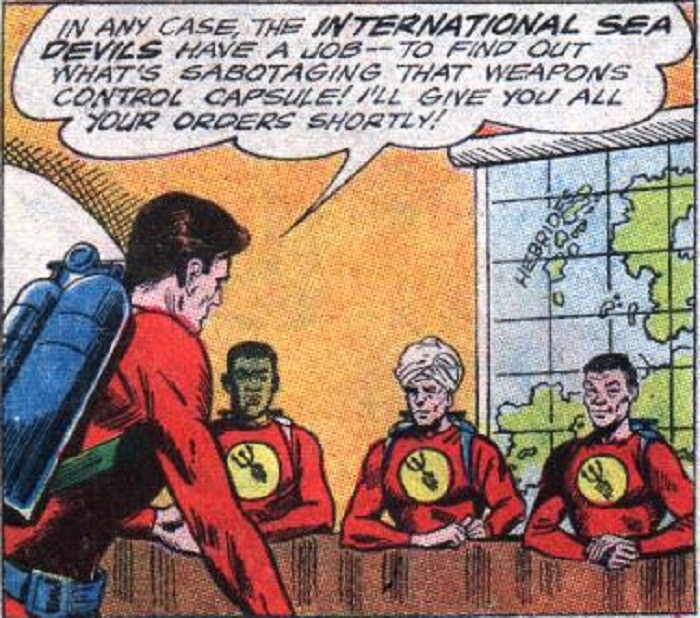
Molo, Sea Devil
First Appearance: Sea Devils #23, 1965
With their debut in 1960, the deep-sea diving Sea Devils were one of the first teams of heroes whose main cause was one of environmentalism—preventing threats to the world’s oceans in order to preserve its ecosystem and the future of mankind. As one of the most integral causes for real world heroes to this day, the mission of the Sea Devils wasn’t, and couldn’t, possibly be limited to Americans alone. Preserving our oceans and our environment is a responsibility which falls upon every citizen of the world. So it was that through the Sea Devils, DC introduced its first international Black hero: a Sea Devil named Molo, who stood in for the continental African coalition of Sea Devils in a meeting of the organization’s global representatives. As one of the team’s most pragmatic members, Molo was the first to discard superstitious rumors of the deep in favor of more feasible scientific explanations. But more than that, Molo represented that barriers of race and nationality have no place in a world where we all rely on each other to survive.
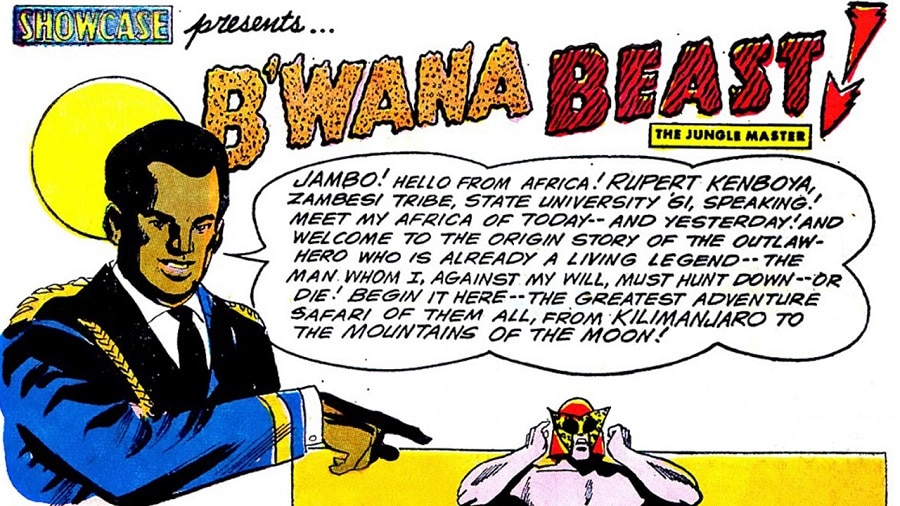
Rupert Kenboya
First Appearance: Showcase #66, 1967
In the pulpy adventure comics and dime novels of the 20th Century, an all-too-common setting was that of a dashing white figure plumbing the depths of a wild African jungle, providing danger and excitement that the reader could usually only achieve through the proxy of fiction. In many respects, Mike Maxwell, the “B’wana Beast” who could fuse any two animals together into a new chimera, was just another example of this ancient archetype. But apart from his strange powers, another thing which stood B’wana Beast apart was his trusted sidekick Rupert Kenboya, a university student and the only man who knew his secret, as well as a native of DC’s fictional African nation of Zambesi—a land which would one day be home to one of the DC Universe’s most prominent Black heroes, Vixen. With the advantage of hindsight, it could be rightly said that the title of defender of Africa really should have been given to a man like Kenboya, as opposed to a white tourist. After decades of obscurity, this oversight was corrected in Vertigo’s Animal Man series, where the mantle of B’wana Beast then passed to Dominic Mndawe, a native South African.

August Durant
First Appearance: Secret Six #1, 1968
Recommended Reading: Action Comics #601-602, #622, #629
In many ways, August Durant was the original Amanda Waller. As a cunning strategist in a covert government organization, the scientifically minded August Durant was one of the original members of the Secret Six. Before the name became synonymous with a mismatched team of misfit super-villains for hire, the Secret Six, overseen by an unknown commander known only as “Mockingbird,” embarked on top secret missions to protect the interests of democracy in the heart of the Cold War. It was only after the deaths of all but one member in a sabotaged plane crash that the team’s sole survivor, Carlo di Rienzi, learned the truth: that August Durant himself had been Mockingbird all along.
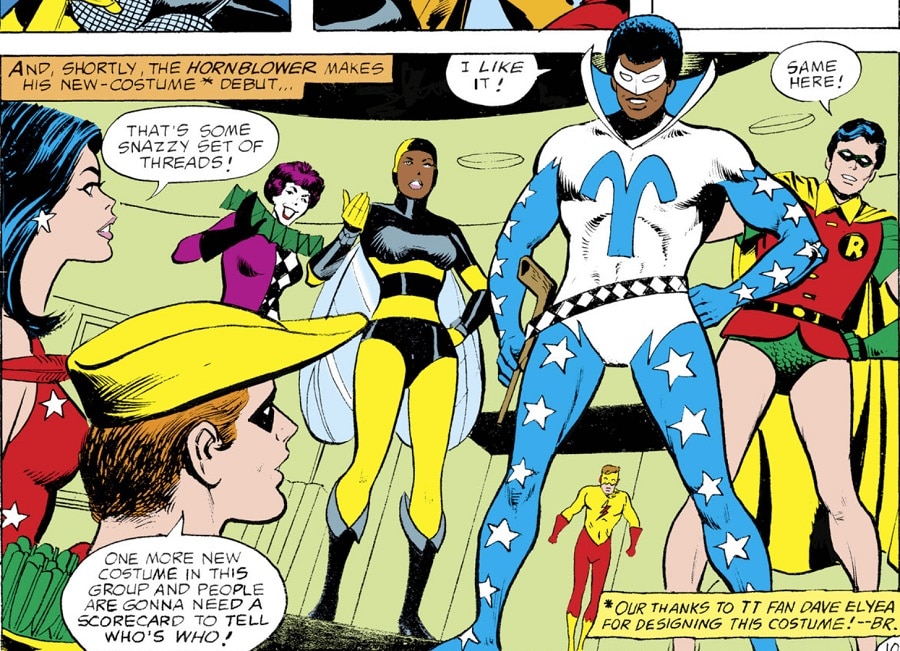
Mal Duncan
First Appearance: Teen Titans #26, 1970
Recommended Reading: Teen Titans #26-53
After saving the Teen Titans from a street gang by challenging their leader to a boxing match, Mal Duncan was accepted as a fully-fledged member of the team. Over the years, Mal has held many titles: the exo-suit powered Guardian, the mystical trumpet wielding Hornblower, the sonically powered Doom Patrol member Vox. Though mostly retired from active duty today, Mal Duncan is still a close friend to the original Teen Titans and has started a family of his own with another of DC’s earliest Black superheroes: Karen Beecher, better known to Titan fans as Bumblebee. (For much more about her, click here.)
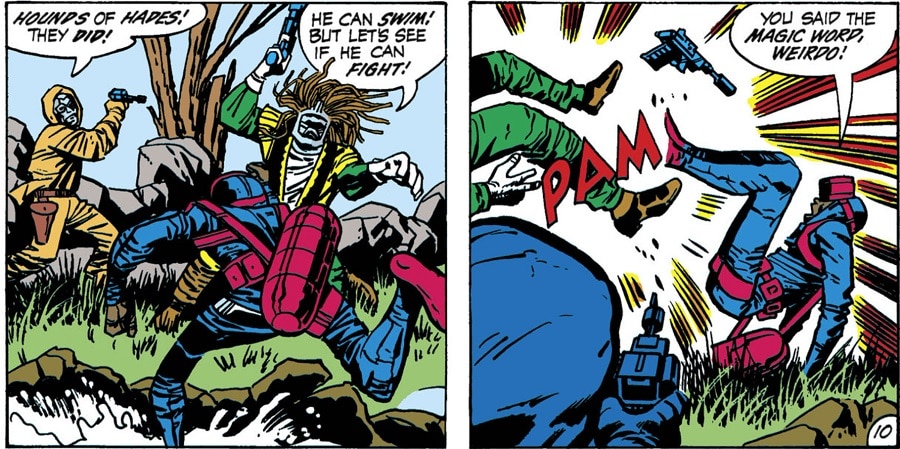
Flipper-Dipper
First Appearance: Superman’s Pal, Jimmy Olsen #133, 1970
Recommended Reading: Cave Carson Has a Cybernetic Eye
Created by Joe Simon and Jack Kirby, the original Newsboy Legion debuted in 1942 as a group of tough-nosed newspaper-selling street kids who could never stay out of trouble—much like Kirby himself and his own circle of roughneck childhood friends in New York’s lower east side. Throughout his body of work amongst many comic publishers, Kirby was an early proponent of racial diversity in comics. It made no sense to him that the heroes of comic book universes should be any less integrated than the real world around him, and that setting the “default” of all characters to lily-white skin was nothing more than a myopic fantasy. So, when Kirby got the chance decades later to reintroduce his Newsboy Legion for his run on Jimmy Olsen, he added a new member: Walter Johnson Jr, alias “Flipper-Dipper,” known for his trademark diving suit and aquatic aptitude. In the harbors where Metropolis kept its dirtiest secrets, Walt Jr. often brought new meaning to getting the Newsboy Legion in Deep Trouble.
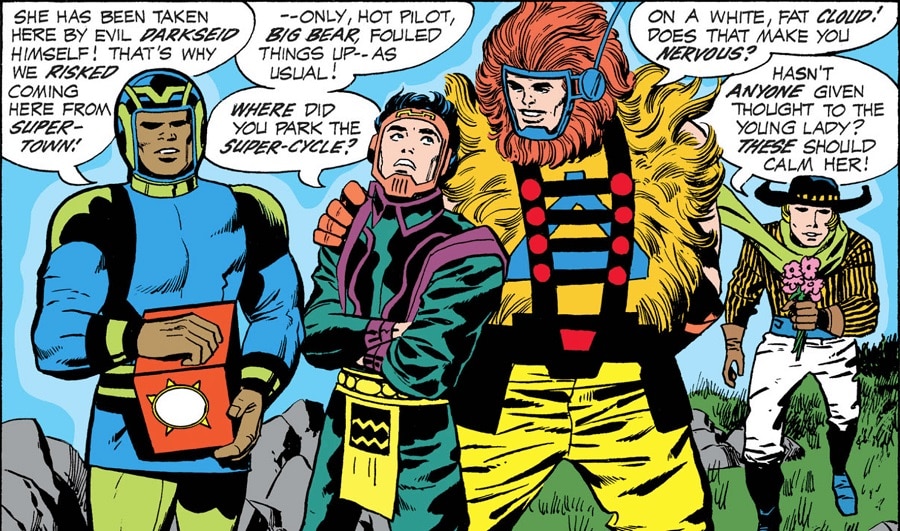
Vykin
First Appearance: The Forever People #1, 1971
Recommended Reading: The Forever People
What do you get when you cross the New Gods with the Newsboy Legion? You get the Forever People, an unlikely group of teens from New Genesis dedicated to keeping one step ahead of Darkseid’s plans to acquire the Anti-Life Equation. Along with the physiology typical of all New Gods, Vykin stood out from the rest via his “Magno-Power,” allowing him to manipulate magnetic fields. Part of the appeal of Jack Kirby’s New Gods was how the mythology often blurred the lines between mystical and scientific. As perhaps the smartest member of the team, Vykin leaned towards the more technical side of the Forever People, serving as the team’s mechanic whenever their signature “Super-Cycle” was in need of a tune-up.
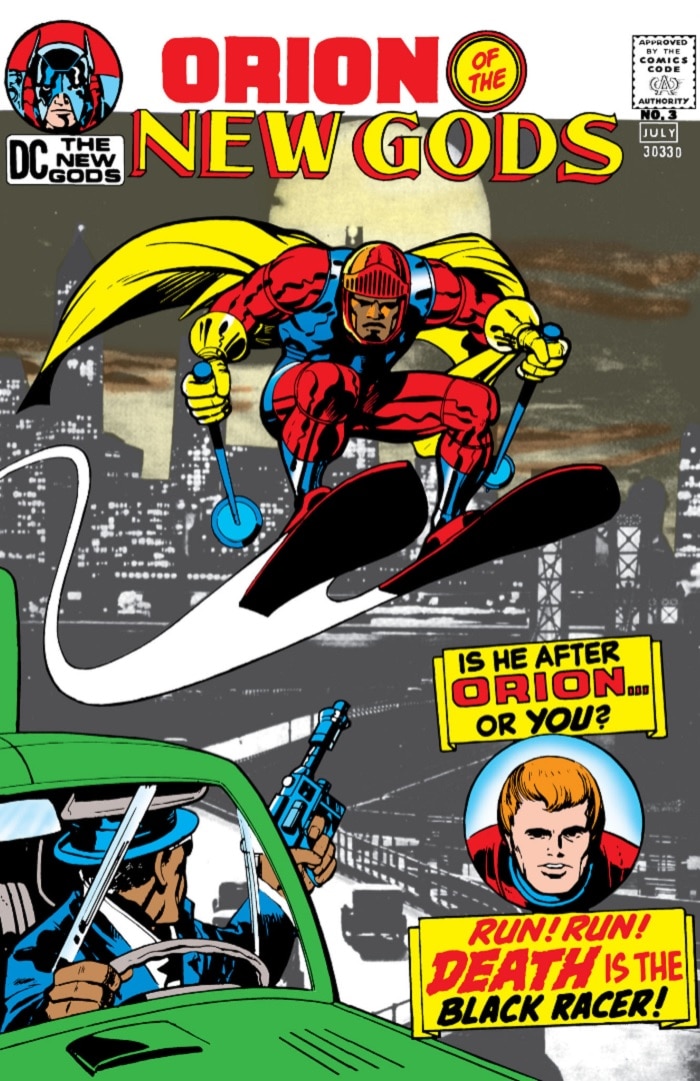
Black Racer
First Appearance: New Gods #3, 1971
Recommended Reading: Final Crisis
Not even gods are exempt from death. A quadriplegic Vietnam war veteran, Sgt. Willie Walker was tasked by the Source itself to become a psychopomp of the greatest import—one who would escort the gods themselves towards death in their final moments. Having witnessed the true horrors of mortality firsthand in Vietnam, no one was deemed more suitable to this solemn task which established stakes of the highest degree across Jack Kirby’s tales of the Fourth World. As an avatar of death itself, Willie Walker is one of the most powerful figures in the DC Universe—and perhaps the only man feared even by Darkseid.
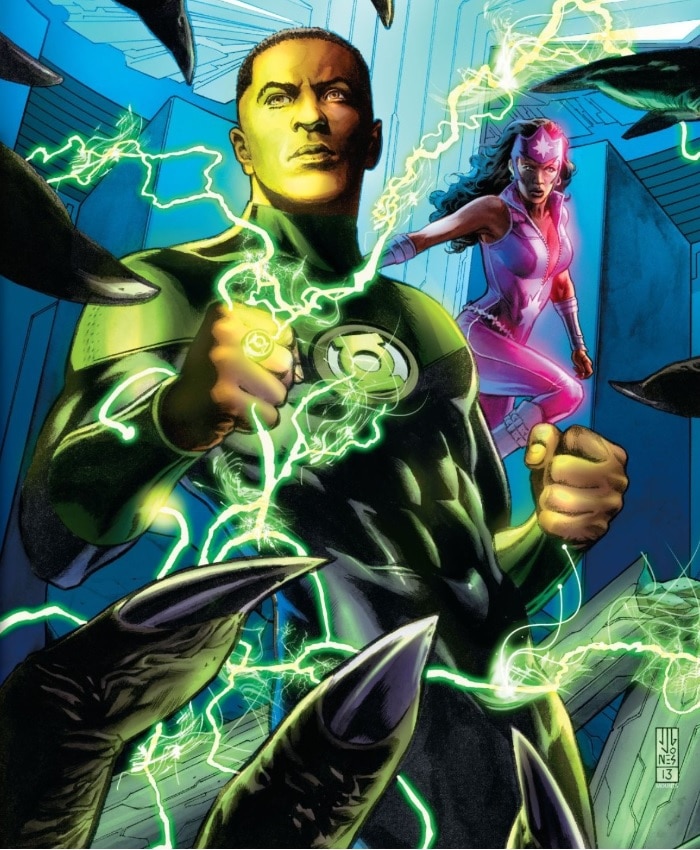
John Stewart
First Appearance: Green Lantern #87, 1971
Recommended Reading: Green Lantern Corps
Because the role prior to the ‘90s is so thoroughly associated with Hal Jordan, it’s easy to forget sometimes that John Stewart showed up as one of Earth’s mightiest heroes six whole years before Black Lightning ever made the scene. During a landmark run of social consciousness by Denny O’Neil and Neal Adams, the hard traveling action cut away from Hal Jordan and Oliver Queen’s soul-searching road trip for an issue to bring some human diversity to the Green Lantern Corps. With sector backup Guy Gardner incapacitated, the typically (for the Corps) self-assured John Stewart was chosen as Earth’s new emergency alternate Emerald Warrior. Stewart’s second appearance teamed him up directly with the Justice League of America, but after a colossal failure to save the planet of Xanshi draped a dark cloud over his career, John became much more serious and dedicated to his duty, eventually rising to become leader of the Green Lantern Corps itself and a member (and sometimes leader) of the Justice League.
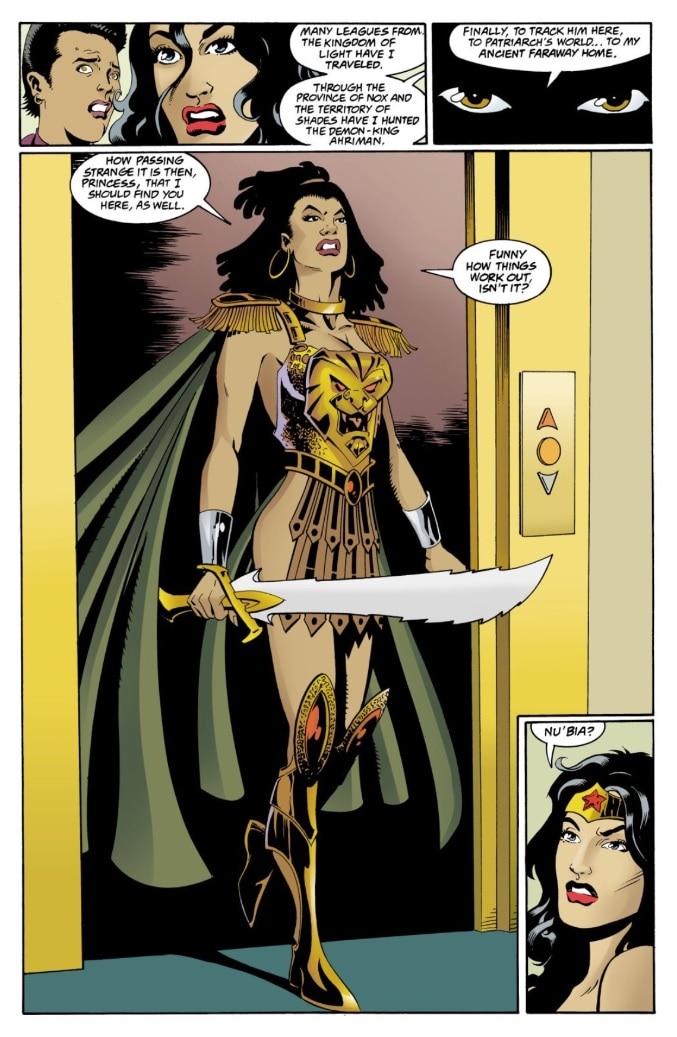
Nubia
First Appearance: Wonder Woman #204, 1973
Recommended Reading: Wonder Woman #154-155, 2000
After a controversial story arc which took Wonder Woman’s powers away from her, feminist icon Gloria Steinem took a stand in a number of public essays which demanded a righting of the heroine’s course. In addition to restoring her powers, Steinem rightly suggested that an element of the feminism Wonder Woman herself stood for which was sorely missing was that of intersectionality. While ostensibly a book of female empowerment, it was only white women who were seeing championship in its pages. To correct this, the character of Nubia was introduced, a sister to Wonder Woman formed from “dark clay.” Just as powerful as Wonder Woman herself in every way, Nubia was eventually reintroduced as a member of a lost Amazonian tribe. After many years as little more than a piece of trivia, Nubia is now a recurring supporting cast member in the post-Rebirth Wonder Woman series, is a part of this month’s DC Future State event and has her own YA graphic novel due in a couple of weeks.
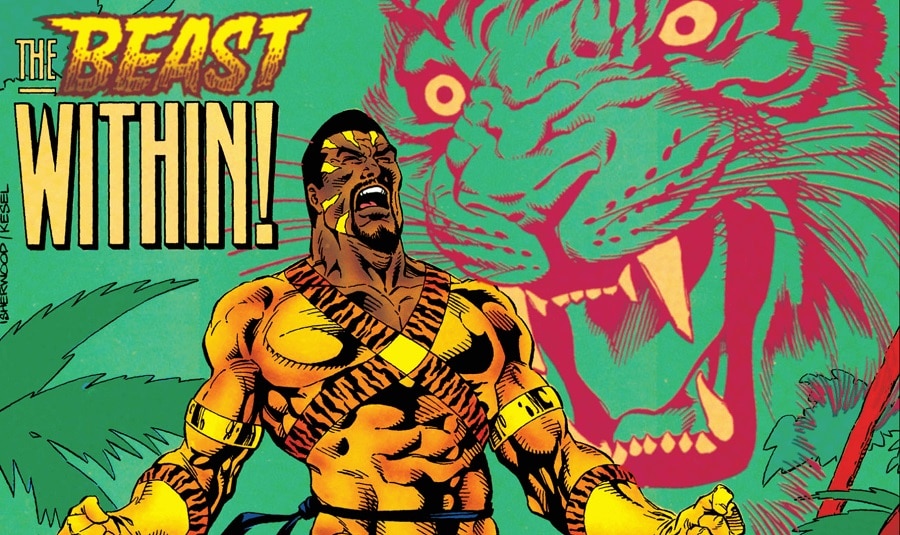
Bronze Tiger
First Appearance: Richard Dragon, Kung Fu Fighter #1, 1975
Recommended Reading: Suicide Squad
Denny O’Neil’s Bronze Age martial arts epic Richard Dragon, Kung Fu Fighter borrowed a lot of influence from the Golden Age of martial arts movies, where Black, white and Asian heroes would fight waves of deadly opponents side-by-side. Such was the inspiration for the early partnership of Ben Turner, Richard Dragon and Lady Shiva. As those kung fu films did themselves in turn, the strong and stoic Ben Turner was heavily defined by archetypes from the “Blaxploitation” film genre of the ‘70s which brought Black audiences to the theaters by putting Black action hero protagonists front and center. The Richard Dragon series eventually ended on something of a cliffhanger, with Ben Turner brainwashed into the villainous persona of Bronze Tiger. For a decade, Ben Turner’s story faded into obscurity along with Richard himself—until the post-Crisis Suicide Squad series recruited him to be one of Amanda Waller’s go-to guys in the field. And wouldn’t you know it? Today, more people know the name Bronze Tiger than the white “Kung-Fu Fighter” he originally showed up to support.
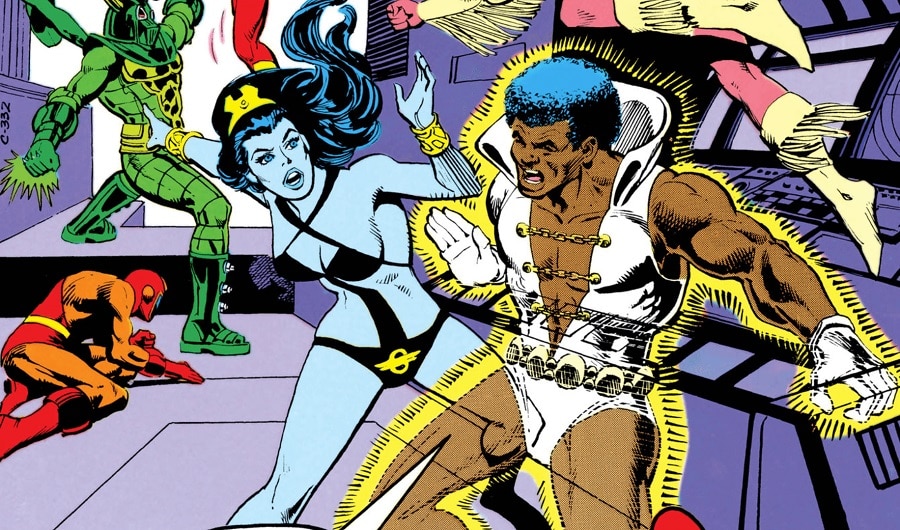
Tyroc
First Appearance: Superboy #216, 1976
Recommended Reading: Legion Lost
With its future-forward mission of a human utopia, the Legion of Super-Heroes has always led the vanguard for diversity of all forms. The first explicitly queer and Jewish superheroes can be counted among its ranks, and so too can one of the first Black superheroes: the versatile Tyroc, native to the lost transdimensional advanced African society of Marzal Island. Tyroc represented a victory in a long campaign by Legion writer Jim Shooter to introduce a Black hero to the Legion that began quite early in his tenure—it only took him ten years to get a yes. With a name that means “Scream of the Devil” in the language of the Marzal people, Tyroc has an extremely wide variety of powers, each of which are triggered by a unique shout. Truthfully, this power became somewhat difficult for writers to manage, as a concept which would probably work better in an audio medium. But hey, who knows? With the Legion undergoing something of a renaissance right now, the time may soon come that Tyroc gets his due.
How many of these early Black superheroes are you familiar with? Which of them would you like to see back in action in the DC Universe? Head on over to the DC Community and let us know!
Alex Jaffe is the author of our monthly "Ask the Question" column and writes about TV, movies, comics and superhero history for DCComics.com. Follow him on Twitter at @AlexJaffe and find him in the DC Community as HubCItyQuestion.
NOTE: The views and opinions expressed in this article are solely those of Alex Jaffe and do not necessarily reflect those of DC Entertainment or Warner Bros.




















